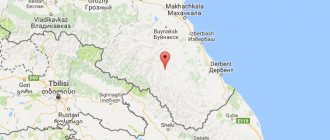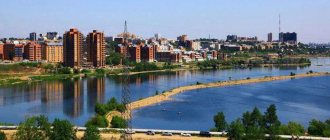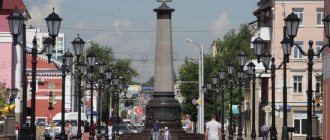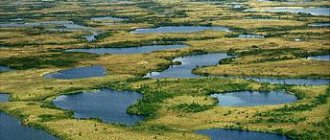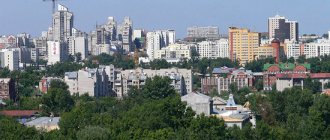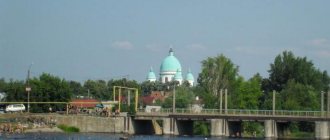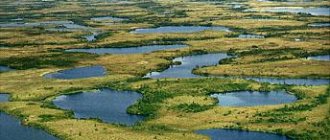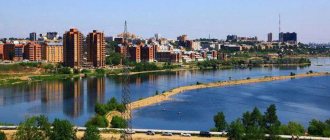Many people are interested in the demographic situation in the country. As a rule, people are interested in the situation in their region of residence. The ability to view up-to-date information online significantly saves time.
Many organizations need up-to-date information on an ongoing basis: on the number, national composition of citizens of the locality. The ability to obtain information from one source will facilitate the work of a number of structures whose work is based on such data. Let us provide detailed statistics on the number of citizens and the national composition of Krasnoyarsk.
Data by year
Krasnoyarsk entered the list of million-plus cities only in 2012. Previously, there was a significant increase in population: due to migration and natural increase.
- 2004: The city's population was 912,800.
- 2005: 917 200.
- 2006: the population in Krasnoyarsk was already 920,900.
- 2007: population was 927,200.
- 2008: exceeded 936,400.
- 2009: the number of inhabitants became 947,801.
- 2010: 973 826.
- 2011: 973 900.
- 2012: 997 316.
- 2013: 1 016 385.
- 2014: 1 035 528.
- 2015: 1 052 218.
- 2016: 1 066 934.
- 2017: 1 082 933.
- 2018: 1 090 811.
- 2019: 1 095 286.
- 2020: 1 093 771.
In just 16 years, Krasnoyarsk has grown by 200,000. At the moment, the growth trend continues; experts say that if the situation is stable by 2030, the number of residents could exceed 1.5 million.
Criminal situation
There is a rating of districts of the city of Krasnoyarsk according to the level of residential safety, which was compiled based on the number of calls to patrol cars.
The Oktyabrsky district was in the lead. Most often, the police had to go to the streets: Kalinin, Zabobonova, Kurchatov, Vysotnaya. In second place was the Kirovsky district (Pavlova, Novaya, Michurina and Gruntova streets). Most fights were recorded in this area. Then come the Sverdlovsk, Central and Soviet regions. For some reason, the Leninsky and Zheleznodorozhny districts are not included in the ranking.
About the city
Krasnoyarsk is one of the largest subjects of the Russian Federation. It has the status of the largest cultural center in Eastern Siberia. It is an educational, industrial and economic center. The major development explains the rapid increase in residents over the past 20 years.
Located on two banks of the Yenisei, the area of the city is 359 square km. The density is 2,700 inhabitants per square kilometer. He is a member of the Association of Siberian and Far Eastern Cities. Krasnoyarsk has repeatedly won the competition for the most comfortable city in the Russian Federation. The standard of living is higher than in the region.
This is explained by the impressive number of employment opportunities for young specialists; developed industry recruits students for internships at leading factories starting from the 2nd or 3rd year. After graduating from college, many go to work at familiar factories.
Small businesses are well developed in the city, which opens up a huge number of jobs for specialists in various fields. It is quite easy for the younger generation to find a job at first, on a permanent basis, according to their preferences. Several employment centers are actively working to help citizens find employment.
Road transport
Two federal and one regional highways pass through Krasnoyarsk:
- Federal highway P255 “Siberia”, connecting Krasnoyarsk with Novosibirsk, Tomsk, Kemerovo and Irkutsk. Formally, the route is a continuation of the P254 Irtysh highway, which goes to Chelyabinsk through Novosibirsk, Omsk and Kurgan. P255 is part of the Asian road route AN6, which connects Eastern Europe (starting at the border with Belarus) and the Republic of Korea, passing through the territory of Kazakhstan, China and the DPRK.
- Federal highway P257 “Yenisei” to Abakan, Kyzyl, Chadan and Khandagaydy, thus connecting Krasnoyarsk with the border of Mongolia.
- Regional highway P409 (04K-044) “Yenisei Highway” to Yeniseisk via Lesosibirsk. The road connects Krasnoyarsk with the federal highways P255 Siberia and P257 Yenisei.
National composition
Russia is a very multinational country, which is clearly felt in large cities with developed industry. A colossal number of visitors from the Middle East work at industrial enterprises in the city and region:
- 92% Russians.
- 1% Ukrainians.
- 1.01% Tatars.
- 0.44% Germans.
- 0.75% Azerbaijanis.
- 0.57% Chuvash
- 0.72% Armenians
Many citizens prefer to travel to work in the regions of Siberia. This is explained by the opportunity to earn better money; there are not a large number of visitors there.
Kirovsky
Quite an old district of the city, the official date of foundation is 1934, and the very first district on the right side of the city. 116,500 people live here. The population in the area is quite diverse; old people and newlyweds who have taken out a mortgage in a new building live nearby.
In the Kirovsky district of the city of Krasnoyarsk there is a huge concentration of industrial enterprises and higher educational institutions, there is a shopping and entertainment complex, and the Theater for Young Spectators. The main advantage of the area is its proximity to the historical part of the city.
However, the housing stock is quite old and consists mainly of Khrushchev and Stalin buildings; there are several quite successful projects of new buildings. Closer to Shchorsa, Pavlova and Kutuzov streets, newer development is already beginning - 9-story buildings.
The development in the area is quite dense, but the area is considered to be well-maintained, with good transport links.
Gender and age
Over 53% of women live in the entire region. There are 1,144 women per thousand men.
- Among the 53% of women, 18% are minors, non-working citizens. 50% of the female population is currently able to work, 30% are women of retirement age
- 47% are men, which is equal to about 517 thousand people. 70% of the male population are able-bodied citizens, 30% are pensioners, minors who are unable to work. The average age of women in the region is 44 years, which is 10 years more than in the regions.
Coat of arms
The coat of arms of Krasnoyarsk is presented in the form of a French shield. On a red field there is a golden lion rearing up. The right paw of the animal has a spade, the left one has a sickle.
The shield is topped with a tower-like gold crown with five teeth and a laurel wreath. The structure is held in place by a silver unicorn (left) and a horse (right). Animals have hooves, manes, and tails made of gold. The eyes and tongues are scarlet. The base is entwined with a ribbon of the Order of the October Revolution and is made in the form of an ornament.
The artistic composition was approved by decision No. B-169 of May 26, 2010. Included in the State Heraldic Register of the Russian Federation under No. 6263.
Marriages and divorces
According to statistics, in 2022 there will be 650 thousand marriages. 83% are officially registered, 17% are civil, unofficial marriages. Every year, 15-18 thousand couples get married, registering their relationship in the registry office. Annual divorce statistics indicate 10-11 thousand divorces.
Compared to previous years, citizens became much less likely to get married. In 2022, the number of registered unions was 23 thousand couples, 9 thousand divorces.
The decline is explained by deteriorating conditions for young families. The lack of new housing prevents couples from purchasing suitable, comfortable housing. Couples prefer to stay in a civil marriage, renting housing. Alternatively, many move in search of more suitable conditions for creating a new unit of society.
The colossal number of industrial enterprises leaves its mark on air quality, which helps reduce the desire of residents to get married and start a family.
Railway
Founded in 1979 as a result of the division of the Oktyabrsky district. Almost 95 thousand people live here. Its territory mainly lies along the railway tracks. But it is here that the calling card of the entire city is located - the railway station.
It is believed that the Zheleznodorozhny district of the city of Krasnoyarsk is well-maintained, with many parks and alleys and squares. Utility problems rarely arise here, since the area is quite young, although almost the entire housing stock is represented by Khrushchev-era buildings. New construction is being carried out locally. There are 16 industrial enterprises in the region, as well as design and scientific institutions.
5 kilometers from the area is the village of Udachny, where the active construction of townhouses and cottages is underway. It is in this village that the governor's residence is located. It is clear that the cost of housing in Udachny is very high; on average, they ask for a cottage from 15 million rubles.
Migration
Part of the working-age male population prefers to travel to work in the regions of Siberia. This is due to the high chance of getting a job with a higher income, increasing the family’s standard of living.
Considering the epidemiological situation, residents are trying to move further away from the millionaire population. Many are moving to settlements in the Krasnoyarsk Territory, where there are fewer people infected with the virus.
Over the summer of 2022, the outflow from the administrative center of the region amounted to 12 thousand. 60% of residents remained in the region, moving to smaller towns. 40% preferred to move to a neighboring region to minimize risks. 9 thousand residents left the country.
During the same time, the number of arrivals to the administrative center amounted to almost 76 thousand, 7 times more than the outflow. 20 thousand came from Russian cities. 50 thousand came from the cities of the Krasnoyarsk Territory. More than 6 thousand arrived from different countries, usually from neighboring countries.
Data for the Krasnoyarsk Territory
Central
As the name implies, this is the business and historical center of Krasnoyarsk. Almost all administrative bodies are concentrated in the region. The housing stock can be described as old, represented mainly by buildings erected under Stalin, although of fairly good quality. After all, almost all houses in that period were built according to individual projects. The main problem of the Central district of Krasnoyarsk is the lack of parking spaces. The cost of housing and commercial real estate is highest here. The area is home to 75.7 thousand people.
There are 5 higher educational institutions and 121 sports facilities, there are exhibition halls, theaters and concert halls.
The district includes the Pokrovka microdistrict, it is located on the crust of the Krasnoyarsk fort. Today there is active development of the vacant lot here. This microdistrict is designed for young people who are ready to live not in the very center, but close enough to it, and are ready for a mortgage.
Forecast
The total number of citizens is growing rapidly, even despite the epidemiological situation in the country. Due to the large influx of population from other regions of the Russian Federation, as well as from different countries, including the Middle East, the number of residents continues to grow. At the same time, the annual outflow is 10-15 thousand, 7 times less than the increase over the period.
According to statistics, over 8 years the number of residents has increased by 100 thousand. If the trend continues in the future, in 2030-35 the administrative center of the region could grow to 1.5 million. This is facilitated by the constant expansion of industry in the Krasnoyarsk Territory, which opens up a large number of jobs and opportunities for residents of not only the cities of the region, the country, but also many countries. Most of the visitors formally register their permanent place of residence.
Krasnoyarsk is a rapidly developing locality with a colossal number of unique employment opportunities. Students from provincial settlements tend to move to a larger region. This opens up opportunities for them to realize themselves as specialists in a narrow, profitable field, and gives them the opportunity to study further, choosing from an impressive number of educational institutions.
Soviet
It is the largest intra-city settlement, with 323,783 people living at the end of 2022.
The date of formation of the district is considered to be 1955, when construction of housing began on a vacant lot called “Wolf Crest”, which was carried out by volunteers. The first building was a dormitory, and a year later the construction of Aluminstroy began. The official date of foundation of the Sovetsky district of the city of Krasnoyarsk is considered to be 1969.
Now the district includes several large microdistricts:
- Green Grove. This is the oldest microdistrict, and was built for employees of the KrAMZ and KrAZ plants. In the 90s it was the criminal center of the entire city.
- Northern. Mostly immigrants from Norilsk and other parts of the north of the country live here. There are many clubs and shopping centers in the neighborhood.
- Innokentyevsky is the newest microdistrict, the development of the territory of which began in 2004 and continues to this day.
- Solnechny is 4.5 kilometers away from the city limits, as it was planned as a satellite city.
- Vzletka - located on the territory of the old airfield. It is characterized as one of the most inconvenient and uncomfortable neighborhoods.
Content
- 1 Geography
- 2 History
- 3 Administrative and municipal status 3.1 City divisions
- 10.1 metro
- 12.1 Sports events
- 16.1 Notes
Map of Krasnoyarsk microdistricts
The map shows which microdistricts the city of Krasnoyarsk is divided into. It is generally accepted that it is better to live on the left bank than on the right bank. But recently, the right bank has become more beautiful and modern, due to the large-scale construction of new residential complexes and infrastructural development. Young families with children prefer to buy real estate in new high-rise buildings with spacious local areas.
Story
Monument to the Czechoslovak Legion at the Trinity Cemetery
The city was founded on August 19, 1628.[2]
as a Russian border fort, when a group of service class men from Yeniseisk led by Andrei Dubensky arrived at the confluence of the Kutch and Yenisei Rivers and built fortifications intended to protect the border from attacks by the indigenous peoples who lived along the Yenisei and its tributaries. Together with Kansk to the east, it represented the southern border of Russian expansion in the Yenisei basin in the 17th century. In a letter to Tsar Michael I, the Cossacks said: ... The city of trunks (log buildings), which we built, and around the site of the fort, we, servants of You, our Lord, cut in the pillars and fastened them with double bindings, and the site of the fort was greatly strengthened ...
Fort received the name Krasny Yar (Russian: Krasny Yar) after Yarin (Khakassian dialect) the name of the place where it was built, Kyzyl Char
('red steep bank'), [21] which was translated as Krasny Yar.
The village received city status in 1690.[22] The intensive growth of Krasnoyarsk began with the arrival of the Siberian Way (road M53
now) in 1735-1741, which connected the nearby cities of Achinsk and Kansk with Krasnoyarsk and the rest of Russia.
In 1749, a meteorite weighing about 700 kilograms (1,500 lb) was discovered 230 km south of Krasnoyarsk. It was excavated by Peter Simon Pallas in 1772 and transported to Krasnoyarsk and then to St. Petersburg. The Krasnoyarsk meteorite is important because it was the first pallasite ever studied and the first meteorite ever engraved.
In 1822, Krasnoyarsk became the administrative center of the Yenisei province.[22] In the 19th century, Krasnoyarsk was the center of the Siberian Cossack movement. By the end of the 19th century, Krasnoyarsk had several industrial and railway workshops, and a machine shop. Growth continued with the discovery of gold and the arrival of the railroad in 1895.
In the Russian Empire, Krasnoyarsk was one of the places of exile for political exiles. For example, eight Decembrists were deported from St. Petersburg to Krasnoyarsk after the defeat of the uprising.
Krasnoyarsk hydroelectric power station
After the Russian Revolution of 1917, during periods of central planning (Five Year Plans), many large plants and factories were built in Krasnoyarsk: Sibtyazhmash, then a docking station, then a paper mill, then a hydroelectric power station (now the fifth largest in the world and the second in the world in Russia), and a river port.
In 1934, the Krasnoyarsk Territory, the administrative center of which is Krasnoyarsk.
During Stalin's times, Krasnoyarsk was a major center of the Gulag system. The most important labor camp was Kraslag or Krasnoyarsk ITL
(1938-1960) with two divisions located in Kansk and Reshety.
In the city of Krasnoyarsk itself, the Yeniseilag or Yenisei ITL
labor camp was also known during World War II (c. 1940–41).
During World War II, dozens of factories were evacuated from Ukraine and western Russia to Krasnoyarsk and nearby cities, stimulating the city's industrial growth. After the war, additional large plants were built: an aluminum plant, a metallurgical plant, a non-ferrous metals plant and many others.
At the end of the 1970s. The Soviet Union began building a phased array radar station at Abalakov, near Krasnoyarsk, which violated the ABM Treaty. Beginning in 1983, the United States demanded its removal until the Soviet Union admitted that the radar station was a violation in 1989. The equipment was slowly removed from the site, and by 1992 it was officially announced that it had been dismantled, although equipment from the site was likely moved to a new site near Komsomolsk-on-Amur.[23] Krasnoyarsk was home to the Krasnoyarsk North-East Air Base, converted into residential areas after the collapse of the Soviet Union.
After the collapse of the Soviet Union and privatization began, many large plants and factories, such as the Krasnoyarsk Aluminum Plant, became the property of alleged crime lords and oligarchs, while others were declared bankrupt. The economic transition led to a sharp rise in unemployment and numerous shocks.
The most famous financial scandal of the second half of the 1990s occurred when the ownership of the Krasnoyarsk aluminum smelter by the famous Krasnoyarsk businessman Anatoly Bykov was revoked after he was accused of murdering his partner, Vilor Struganov. The accusation ultimately turned out to be false.[24] Problems of ownership of the Krasnoyarsk plant persist into the early 21st century, since almost all of them are owned either by monopolistic financial groups or oligarchs.[ citation needed
]
Since the election of Pyotr Pimashkov as mayor of Krasnoyarsk in 1996, the city's appearance has gradually improved: old historic buildings have been restored, asphalt paths have been replaced with paving stones, and numerous squares and recreation areas with fountains have been restored or built from scratch. Now most of the city has retained only some traces of its former grey, post-collapse appearance.[ citation needed
]
Features of the holiday
During the official opening of the celebration, congratulations are heard from local authorities, then the city flag is raised and a volley is fired from a signal cannon in the main square. After this, the holiday can be considered open. On the main stage, in public gardens and parks, you can listen to performances by live singers and musicians, including the local symphony orchestra. In the evening, participants in public events will enjoy a gala concert with invited stars from Moscow and other Russian regions. The evening traditionally ends with fireworks.
Figure 2. Highlights
The cleanest district of Krasnoyarsk
Among the cleanest areas are the Oktyabrsky and Sovetsky microdistricts: Akademgorodok, Vzletka and Severny, also in the Udachny residential complex. They are famous for their clean air, pleasant forest and mountain aromas, and picturesque views. Those who moved admire Krasnoyarsk nature, and more specifically the unique Siberian flora. The only drawback of the remoteness of residential areas is the relatively large distance to the active part of Krasnoyarsk.
Famous people
Main article: List of people from Krasnoyarsk
Monument to Victor Astafiev Monument to Vasily Surikov
- Andrey Vorobyov, Governor of the Moscow Region
- Vyacheslav Butusov, singer and songwriter
- Vasily Surikov, historical artist
- Victor Astafiev, writer
- Petr Slovtsov, opera singer
- Andrey Makin, writer
- Evgeny Popov, writer
- Dmitry Hvorostovsky, opera baritone
- Alexander Semin, hockey player
- Elena Khrustaleva, biathlete
- Evgeny Ustyugov, biathlete
- Evgeny Isakov, hockey player
- Helen Fischer, German singer and actress
- Valentin Danilov, Russian scientist
- Walter Ciszek, a Polish-American Jesuit priest, is being held here on suspicion of spying for the Vatican.
- Iya Gavrilova, hockey player
- Sergei Ivanovich Lomanov, ball manager and former player
- Sergei Sergeevich Lomanov, ball player
- Victoria Tereshkina, prima ballerina
- Kaziel, artist
- Sofya Samodurova, figure skater
Elite areas of Krasnoyarsk
In 2022, it will win first place in the ranking of the best luxury housing district - South Bank. The developers attracted first-class architects and construction teams to the project, who transformed the residential complex into a European zone.
The residential complex "Yuzhny Bereg" is located in the Sverdlovsk region, on the right bank of the Yenisei. It is a separate area with high-rise buildings in a modern style. The first floors are equipped for commercial real estate - cafes with terraces, business centers, educational and sports sections. In addition, there are cozy playgrounds, walking areas, and underground parking.
And a special place is occupied by apartments with European decoration - they are very spacious and have panoramic views of the Yenisei. The configuration ranges from one-room to four-room apartments, single-level and two-level.
The price of a 1-room apartment in rubles is 5.5 million, a 2-room apartment is 7.5 million, a 3-room apartment is 8 million, a 4-room apartment is 16.3 million.

